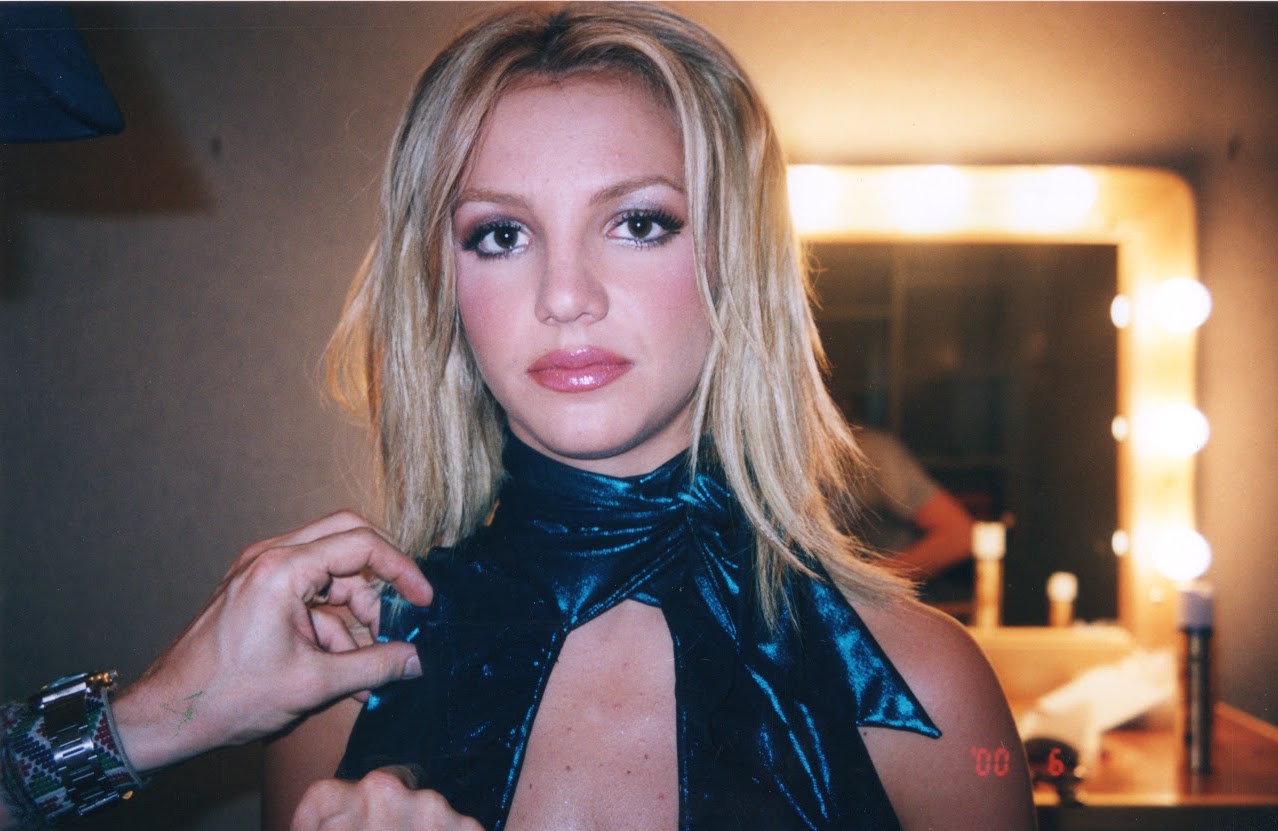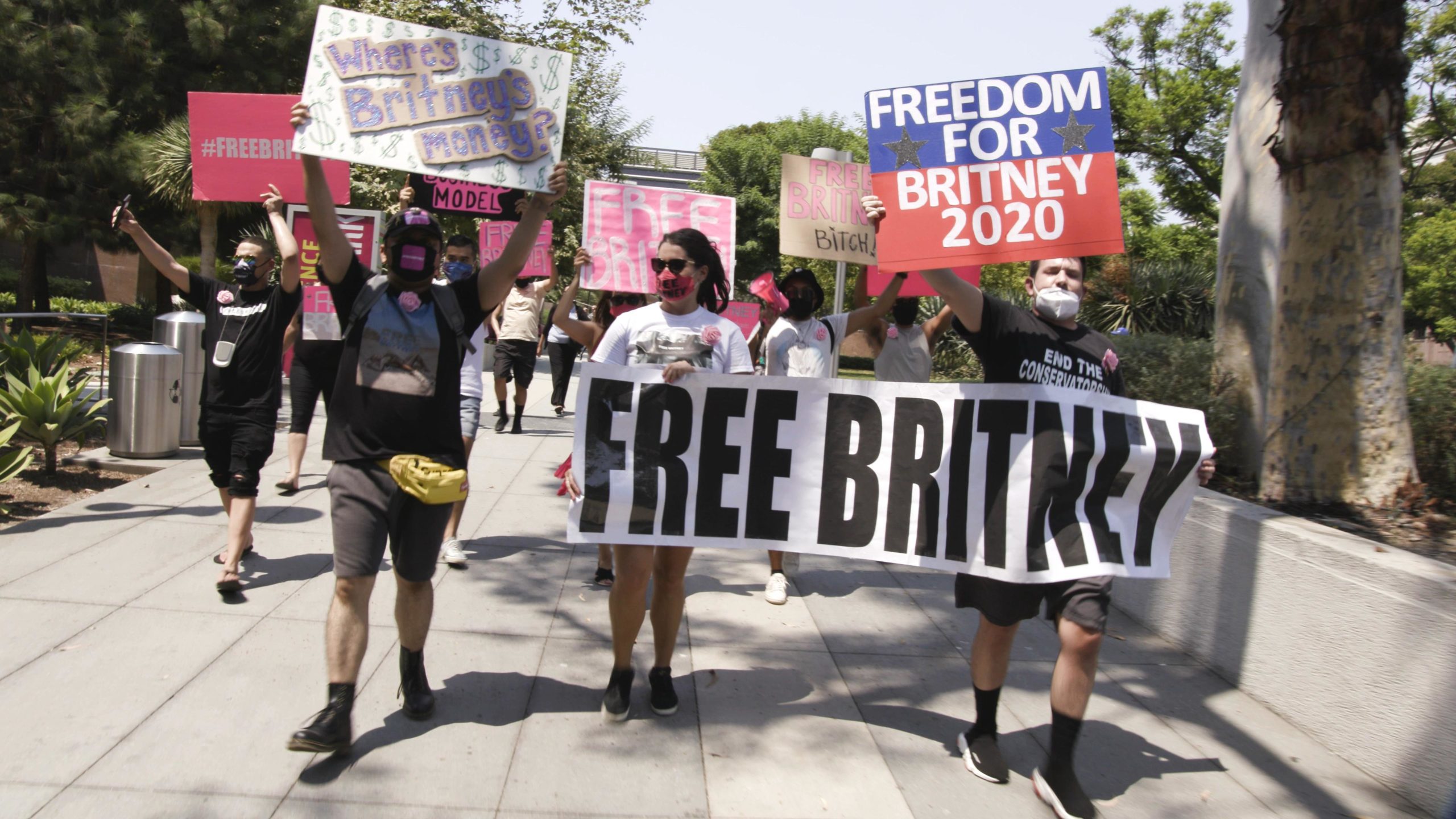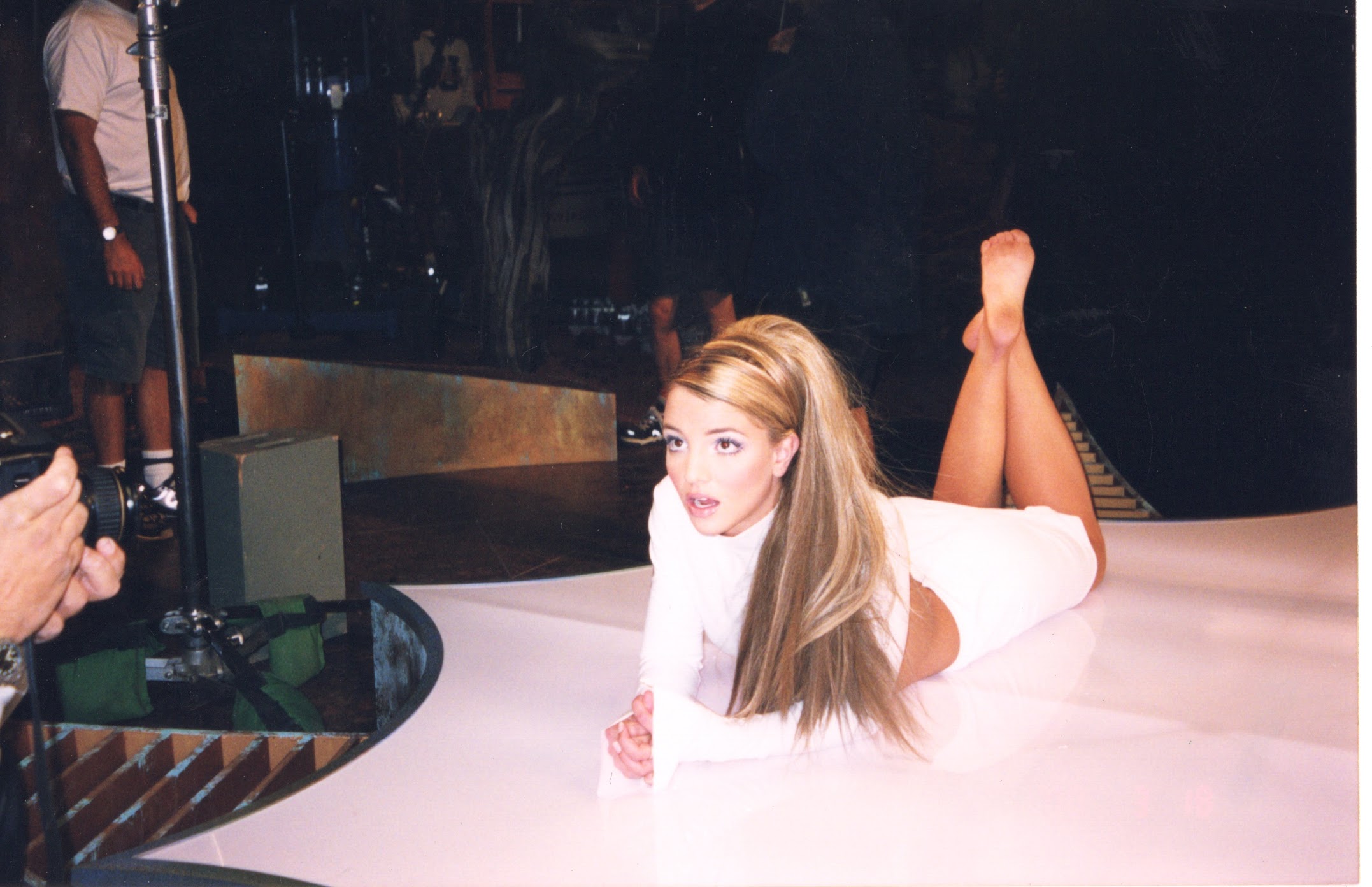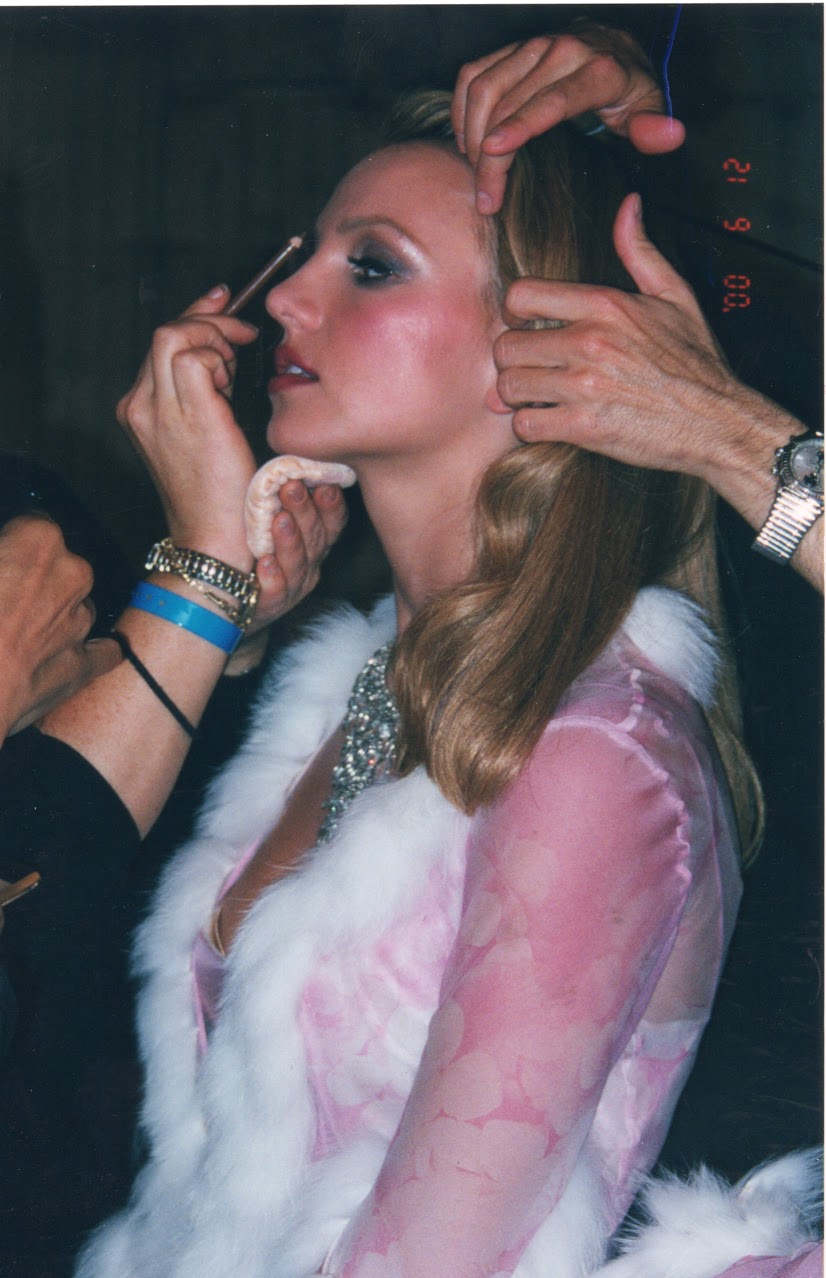
Part-way through Framing Britney Spears, critic Wesley Morris invokes the Clinton-Lewinsky scandal to paint a picture of America at the end of the millennium. Fuelled by a tabloid culture in which magazine directors sometimes had $140,000 a week to spend on celebrity photographs, the era of Britney Spears’ rise is shown to be the low point in the vilification of young women sexualised in the public sphere. Coupled with the early age at which she entered the public eye, this led to coverage of Britney’s relationships—and later, her parenting—marked not just by extraordinary levels of intrusiveness and misogyny, but also the suggestion that Britney represented a moral threat to the American middle-classes.
Beyond campaigning for Britney’s release from a 13-year-long conservatorship—a legal instrument whereby her estate and person are controlled by a range of third parties, including her father—the #FreeBritney movement is an explicit rebuke of this period. What the New York Times film makes clear is that Britney’s incarceration is, at least in part, a byproduct of a media culture which drove her to mental capitulation in front of its own cameras. She is emblematic of wider, and by no means extinct, social conditions: the mishandling of child stars, the overreach of the press, the financial exploitation of celebrities, and a deep social conservatism which reserves its most vicious attacks for vulnerable young women.

The #FreeBritney movement depicted in the documentary represents a generational collision: the cause of a nineties-noughties popstar taken up by a conscientious, empowered millennial and Gen Z fanbase, adept in the language of social media activism. That the details of her conservatorship were recirculated via Britney’s Gram, a fan-led podcast dedicated to analysing each of the singer’s Instagram posts, speaks to the dramatic technological evolution since Britney’s most widely publicised mental health struggles in 2007.
“Britney’s public persona has diminished as the wider gates of celebrity access have burst open”
In taking up a cause that in some cases predates them, Britney’s new TikTok and Twitter supporters are applying these technologies’ rules of creative agency, control and self-determination to reinterpret the injustices committed against her. The possibility that Britney is not behind her own Instagram posts—the choice of emojis is unpacked in the documentary, and her use of a flip phone is much-discussed online—receives as much attention as her inability to oversee her spending and touring schedule.

Social media activity therefore becomes not just an important clue as to the true extent of the conservatorship’s day-to-day terms, but a rare anomaly in a modern-day celebrity culture in which access is king. In fact, Britney’s public persona has diminished as the wider gates of celebrity access have burst open. In a 2008 MTV documentary, she told reporters that: “If I wasn’t under the restraints that I’m under right now, with all the lawyers and doctors, and people analysing me every day, and all that kinda stuff—
if that wasn’t there, I’d feel so liberated, and feel like myself.” That such candidness is now unthinkable justifies the movement’s concern for Britney’s freedom of thought and expression.
This has continued since the documentary debuted, with a tweet sent by the star on 9 February suggesting to some fans that Britney could be aware of the film: “Each person has their story and their take on other people’s stories !!!! Remember, no matter what we think we know about a person’s life it is nothing compared to the actual person living behind the lens.” (It should also be noted that social media is awash with people deriding fans’ attempts to decode Britney’s social media posts as a conspiratorial exercise.)
The power of this online activism reaches its peak in the documentary when, against the backdrop of the huge investigative resources of the New York Times, a source who claims to have been associated with the conservatorship’s legal team chooses to reach out to the Britney’s Gram podcast with new revelations. “What is going on is disturbing, to say the least,” he says, alleging that Britney had been involuntarily committed to a mental health facility in 2019 after breaking the terms of her conservatorship by driving to collect fast food with her boyfriend. (The ensuing claim that she had been ‘missing’ since January 2019 spawned the #FreeBritney movement).

The Times is unable to confirm the report, but its inclusion, alongside the significant airtime given to the creators of the Britney’s Gram podcast, suggests a recognition that #FreeBritney remains most effective when sticking to these grassroots, somewhat aspirational tactics. Court documents from Britney’s latest application to have her conservatorship reviewed in November 2020 (which was denied) acknowledge her fans’ support: “At this point in her life, when she is trying to regain some personal autonomy, Britney welcomes and appreciates the informed support of many of her fans.” The documentary’s success has now cemented #FreeBritney as the unofficial pressure group for her release, it’s consciousness-raising effect undoubted.
“Many activists share a sense of repayment which is common across music fandom: Britney helped them through adversity, and now it is their turn”
But alongside appealing to new, younger audiences, Britney’s rise and fall is also the story of the fans who were, in effect, her contemporaries through her early years, beginning with The Mickey Mouse Club in 1992. Samantha Stark, the documentary’s director, told fans on Reddit last week: “When Britney was being shamed for her sexuality as a teenager and stalked as a young adult, the gatekeepers to all these media outlets—the ones doing the shaming—were in their 30s, 40s, 50s. We as teenagers watched that happen. Now that my/our generation are a lot of the gatekeepers, we’re saying ‘no more.’”

This adds to the feeling that the campaign to expose—if not actually reverse—the mistreatment of Britney represents a coming of age on behalf of a whole generation of cultural consumers. In graduating from passive recipient of a certain kind of deplorable coverage to, in Stark and editor Liz Day’s case, tastemakers in a steadily reforming, post-#MeToo American media, the star’s contemporaries embody the very narrative arc that the movement advocates for Britney herself: freedom from the values and standards of the past.
Many #FreeBritney activists also share a sense of repayment which is common across music fandom: during her nineties ascendency, Britney helped them through adversity, and now it is their turn to help her. As one activist in the documentary says: “that story of control and identity really resonates.”

This also helps to explain the apologies to Britney that began to surface after the documentary aired—a scrambling to update the record in much-changed times. Justin Timberlake, whose Cry Me a River music video Wesley Morris describes in the show as “pure male revenge fantasy,” publicly recognised the “system that condones misogyny and racism” from which he had benefited, at the direct expense of female counterparts such as Britney and Janet Jackson. “Because of my ignorance, I didn’t recognise it for all that it was while it was happening in my own life but I do not want to ever benefit from others being pulled down ever again.”





